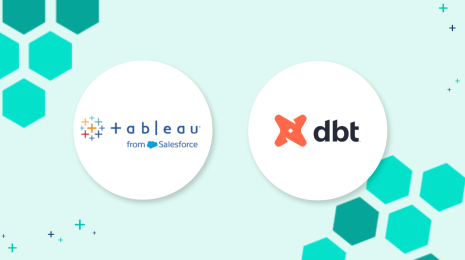Developer Platform news: January 2021
Editor's Note: Tableau Online is now Tableau Cloud. And the Tableau Extension Gallery is now Tableau Exchange.
Each month, our Developer Platform team pulls back the curtain on recent work to support our developer community during the monthly Tableau Developer Program Sprint Demos. As we start a new year, we’re excited to share important updates, including: Analytics extensions on Tableau Cloud, Tableau Server in a container, the new file format for Hyper API, and In-Product Extensions Gallery.
You asked—Tableau Cloud now supports Analytics Extensions
Analytics extensions refer to the set of functions that users can apply to pass expressions to extensions for integration with R, Python, or other custom APIs to conduct more advanced analysis. This feature has been used for prescriptive analytics or sentiment analysis in Tableau. Previously available to Tableau Desktop and Server users, we are excited to announce that analytics extensions are available in Tableau Cloud.
Enable it today as an admin for your Tableau site. This feature is also available on the free development site accessible after you join the Tableau Developer Program.
When setting up your analytics extension connection in Tableau Cloud, be sure that your connection uses SSL and authentication. You can learn more about the setup here.
Fast, automated, repeatable deployments with Tableau Server in a container
If you’re not familiar with containers, “a container is a standard unit of software that packages up code and all its dependencies so the application runs quickly and reliably from one computing environment to another.” [Source Docker]
Tableau Server in a Docker container is Tableau's first container-based server offering. A Tableau Server in a container image is an all-in-one Tableau Server on a Linux Docker container, allowing you to run an entire, self-contained Tableau Server application inside of it for fast, automated, and repeatable deployments. To build on this initial version, we plan to add support for auto-scaling and orchestration of Tableau Server via Kubernetes in future releases.
Deploy Tableau Server in a Docker image from Tableau 2021.2, with support for container images running only on Linux. We will also add a Tableau Server in a container image setup tool to help you create and customize container images to include custom drivers and connectors.
New in-product Tableau Exchange adds extensions in your workflow
The Tableau Exchange allows users to find and download dashboard extensions and connectors to extend the capabilities of Tableau. Using the Tableau Exchange, Tableau partners and developers can also share their work seamlessly with the vast Tableau community.
In Tableau 2021.1, we will add an in-product browsing and installation experience for both partner-built connectors and dashboard extensions.
Browse listings from the Tableau Exchange without leaving your workflow and then install extensions and connectors with one click, without downloading anything locally.
And we further enhanced the browsing experience by introducing a new way to filter by category and search for extensions so you can easily discover a favorite dashboard extension or connector.
If you want to expose your work seamlessly to Tableau users, reach out to the Gallery team.
Work more efficiently with extracts using a new Hyper API file format
With Hyper API, developers gained the ability to delete and insert data in .hyper files. One of the main use cases for this new feature is incremental refreshes, often implemented as rolling windows. However, in some cases, file sizes increased unexpectedly as rows were deleted in a .hyper file. To solve this, the January release of Hyper API introduces a new and improved Hyper file format.
To benefit from this new file format, which handles database files more efficiently after rows are deleted, opt-in with the January Hyper API release. You can also check out a Hyper API example demonstrating the upgrade and downgrade of the Hyper file. By default, Hyper API will create new files with the previous format. Existing .hyper files will stay in the old file format, except if explicitly updated.
The new file format is supported by Tableau Prep version 2020.2 and newer, and by all other Tableau products starting with version 2019.2.10, 2019.3.6, 2019.4.5, and 2020.1.1, including Tableau Cloud and Tableau Public.
From the #DataDev community
- Elliott Stam teaches how to download Bitcoin data with Python and visualize it in Tableau
- Anya Prosvetova explores the Metadata API to build a data dictionary
- Claire Zhang shares her experience with the DataDev mini-challenges
Join the #DataDev Program to get invited to our exclusive Sprint Demos and be the first to know about the Developer Platform updates—directly from the engineering team. See you next month!








